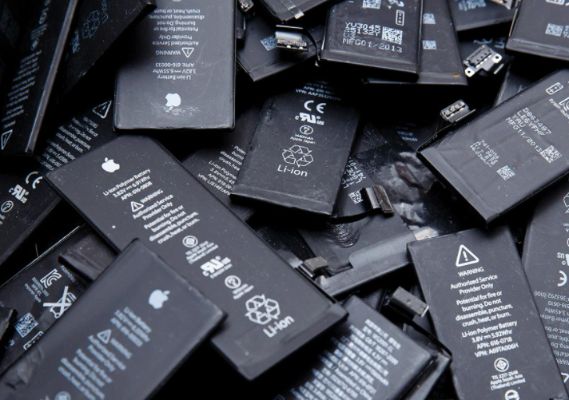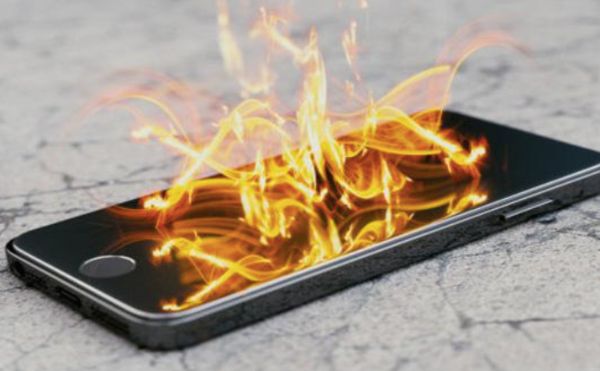Li-ion: An Invaluable Asset With Little Regulation
Li-ion batteries are most dangerous when their life cycle is over, according to an International Solid Waste Association report.
If the batteries are destroyed in the process of collection, disposal or recycling or are unfavourably deformed in such a way that the positive and negative poles touch each other, a thermal runaway reaction can occur, resulting in an uncontrolled exchange of ions and the release of pure oxygen.
This self-reinforcing process leads to a fire or explosion that is very difficult to control by conventional means such as water. The best solution is to cut the air supply and allow the fire to burn in a more or less controlled manner.
Today, the danger posed by Li-ion batteries is becoming ever greater, the report says. Until a few years ago, Li-ion batteries were rare in waste management facilities or landfills. But now, more and more of them are reaching the end of their life cycle and need to be disposed of.
Global records and figures are scant. In Germany the number of Li-ion batteries in use tripled between 2009 and 2017 – from 3,300 to 10,000 tonnes – according to the German Federal Environment Agency.
To properly assess the scale of the problem, in October 2020 a sub-group of the International Solid Waste Association (ISWA) Working Group on Recycling and Waste Minimisation undertook research to determine the effects of this issue internationally and to see whether there were any good practice suggestions that could be adopted.
An open-ended questionnaire distributed to members of both ISWA Recycling and Waste Minimisation and Hazardous Waste Working Groups drew a dozen responses, all but three from Europe.
Responses confirmed that Li-ion batteries were perceived as a fire-risk source, but few respondents were able to quantify either the scale of the problem or provide evidence of incidents caused by Li-ion batteries.
Assessing the scale of the problem is difficult because few countries keep comprehensive records of fires in collection vehicles or at transfer stations, sorting plants and other waste management facilities.

Charged up
Like pretty much all batteries, lithium-ion batteries work by storing energy and releasing it through controlled chemical reactions.
A lithium-ion battery has two electrodes -- places where electricity can enter or leave the battery.
One electrode, called the anode, is filled with negatively charged ions. The other electrode, called a cathode, contains positively charged ions and lithium.
When you use a battery, the lithium moves over from the cathode to the anode -- and when you charge it, the lithium moves back over to the cathode.
There’s a separator inside which keeps the anode and the cathode from touching because that can trigger mishaps such as fires and explosions.
One of the most common reasons the batteries explode is because of mistakes in the charging process.
Inside the devices that rely on the batteries, software tells them exactly how much the batteries should be charged and how fast. If those protocols are set incorrectly, it can destabilise some chemicals inside the battery and cause a chain reaction that researchers call a thermal runaway that may lead to fire or explosions.
A voluntary recall of about 2.5 million Samsung Galaxy Note 7 smartphones in 2016 after reports of battery explosions raised new concerns about safety.
The company reported at least 35 cases where the batteries combusted because of “a very rare manufacturing process error” in which the anode and cathode touched, it said in a statement on its British website.
A few years earlier, a flight from Tokyo to Boston landed on schedule on schedule. Later when a technician inspected the parked Boeing 787 Dreamliner he discovered plumes of smoke. The lithium-ion battery responsible for the Dreamliner’s power supply had ignited itself.
A few days later, there was another fire in a Boeing 787, this time in the air. Thirty-five minutes after the plane had taken off, the pilots noticed smoke in the cabin. Their emergency landing at the nearest airport may well have prevented a disaster.
During the following months and years, Boeing had to deal with problems caused by Li-ion batteries over and over again.
This increased public awareness of the fact that Li-ion batteries are very powerful, but they also have their pitfalls. In the worst-case scenario, they catch fire.

There was one recorded incident of a refuse collection vehicle fleet in East Northamptonshire that was burnt out due to Li-ion batteries, and reports of battery storage and sorting facilities in both France and the UK that were destroyed by fire. A partial survey of its largest members undertaken by the Environmental Services Association in the UK found that in the 2019-2020 year to March, 670 fires were recorded, of which 145 could be attributed directly to Liion batteries. A further 112 incidents occurred where Li-ion batteries were suspected of being the cause of the fire.
There are good reasons to enhance systems of care and control for the effective disposal of Li-ion batteries, the report says, including resource conservation, citizen engagement to ensure proper disposal of their waste, and protection of public health and safety.
Because lithium is a raw material that should be re-used from battery packs and then reclaimed from spent batteries, it will become increasingly important to try to retain this raw material in use.
While the economic case for doing so in the 2020s is difficult to justify, with the circular economy becoming ever more prominent as a guiding principle for environmental action, recovery of lithium will be critical.
To help implement the circular economy, people must be encouraged to play their part in separating their waste and sending it on for recycling.
At present, the most pressing need is to reduce the fire risk that results from the careless and inappropriate collection, treatment and processing of Li-ion batteries and ensure batteries are carefully stored and handled.
In this context, the introduction of clearer guidance for both citizens and waste handlers is essential.
In the future, extended product liability for Li-ion batteries will be necessary. The distributors of Li-ion batteries must be obliged to dispose of them properly.
At the same time, increased efforts will be needed to recover the valuable and limited raw materials contained in Liion batteries in an economically viable manner, the report says.
KASK. PART OF YOU.


 Alcohol Healthwatch: Licensing Decision Lauded For Prohibiting Buy Now Pay Later Schemes In Bottle Stores
Alcohol Healthwatch: Licensing Decision Lauded For Prohibiting Buy Now Pay Later Schemes In Bottle Stores Motor Industry Association: Vehicle Registrations Up 5.6% In December, But Year-To-Date Sales Reflect Market Challenges
Motor Industry Association: Vehicle Registrations Up 5.6% In December, But Year-To-Date Sales Reflect Market Challenges BNZ: Depression-era Bequest Still Helping 88 Years Later
BNZ: Depression-era Bequest Still Helping 88 Years Later Hugh Grant: How Can Telehealth And Home Healthcare Solutions Be Helpful?
Hugh Grant: How Can Telehealth And Home Healthcare Solutions Be Helpful? New Zealand Merino Company: The New Zealand Merino Company Will Investigate PETA Claims
New Zealand Merino Company: The New Zealand Merino Company Will Investigate PETA Claims New Zealand Certified Builders: Building A Granny Flat? Four Things You Should Know
New Zealand Certified Builders: Building A Granny Flat? Four Things You Should Know



